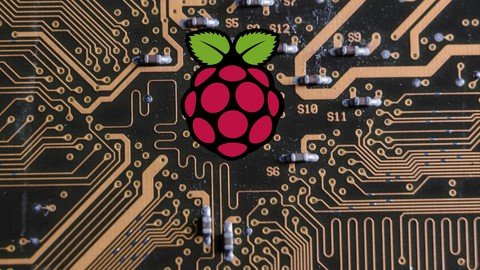
Genre: eLearning | MP4 | Video: h264, 1280×720 | Audio: AAC, 44.1 KHz
Language: English | Size: 811 MB | Duration: 2h 11m
Connect to Raspberry Pi and Write Professional VIs for practical applications. Taught by a Certified LabVIEW Developer!
What you’ll learn
Installation of LabVIEW Community Edition 2020
Setting up of Raspberry Pi with Raspbian OS to run on LabVIEW Real-Time Engine
Deployment of a startup executable file to Raspberry Pi for ‘Headless’ Operations
Interfacing with the Digital I/O Channels of the Raspberry Pi
Basic Fundamentals in LabVIEW
Description
Welcome to the course! The course will equipped you with the knowledge to develop virtual instruments systems to interface with Raspberry Pi and real world sensors using LabVIEW, a graphical programming software widely used in the test and measurement industry.
Teaching Strategy
• Short lectures at the beginning of each module are used to present the contents of the module to students in a systematic and organized manner. Following the end of each lecture lessons, practical lessons will be conducted with hands on exercises of virtual instruments design and implementation using a step-by-step approach aims to enhance student understanding of integration of hardware and software architecture.
Who uses LabVIEW and where can it found?
LabVIEW is used by scientists and engineers around the world to create software for control, test and monitoring applications. For example, London Underground uses NI LabVIEW Platform to develop a control and monitoring system for the Victoria Line, which in turns lead to savings of 350,000 pounds annually!
Why use LabVIEW?
1. Hardware Support: LabVIEW has a wide range of support of various protocols, buses and equipment. For example, if you have a third party equipment which has Modbus, you can communicate with your device via the NI Modbus Library which allows LabVIEW to communicate with it!
2. Development Time: LabVIEW being a graphical software environment reduces development time and cost due to flexibility of the software with it intuitive graphical programming approach.
3. User Friendly: LabVIEW Environment can be used across platforms from PCs running on Windows and MAC to embedded targets such as Raspberry Pi and even on FPGAs too!
The course will cover the following sections:
Section 1: Getting Started with Raspberry Pi
Introduction to the Course and outline
Installation of LabVIEW Community Edition 2020
Raspberry Pi Setup
Section 2: LabVIEW Basics
LabVIEW introduction and basic concepts for programming with LabVIEW
Section 3: Using Digital I/O Channels of the Raspberry Pi
Interface with the digital I/O Channels of the Raspberry Pi
Design Virtual Instruments to control LEDs, reading of pushbutton switches states and etc.
Deployment of EXE File for Raspberry Pi to run as a standalone target
Section 4: Data Acquisition
Introduction to I2C Protocol and Data Acquisition
Creation of Virtual Instruments (VIs) to interface with sensors
Section 5: Course Conclusion
Conclusion and Summary of Course
Who this course is for:
Hobbyists, Students or Engineers who are interested to use LabVIEW to develop projects with Raspberry Pi
Anyone who wants a reduced development time to develop software-based applications for Raspberry Pi
Password/解压密码www.tbtos.com
转载请注明:0daytown » Interfacing Raspberry Pi and Real-World Sensors with LabVIEW